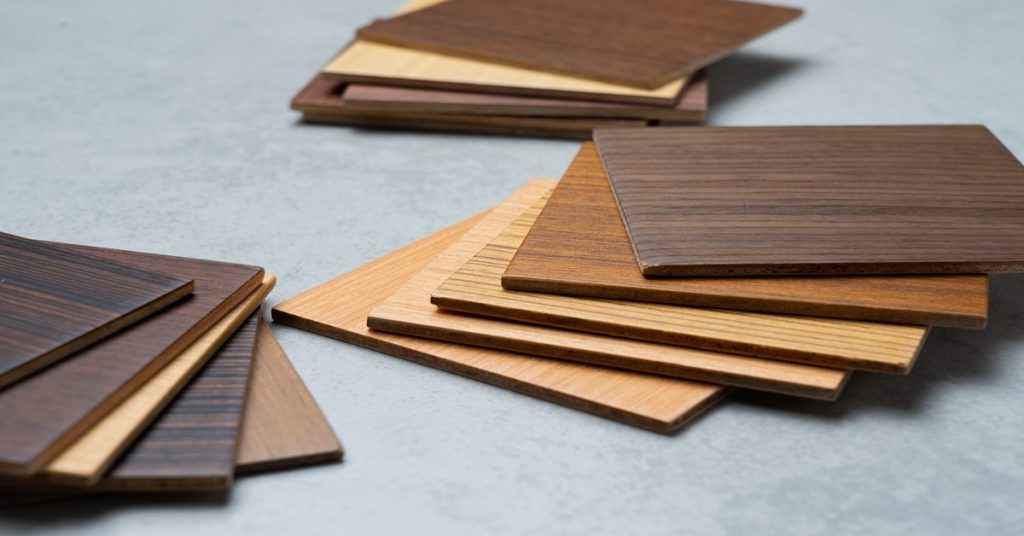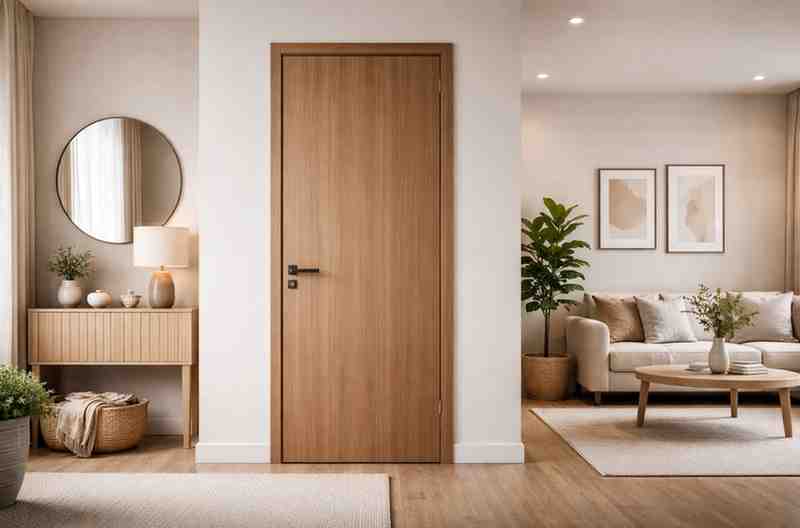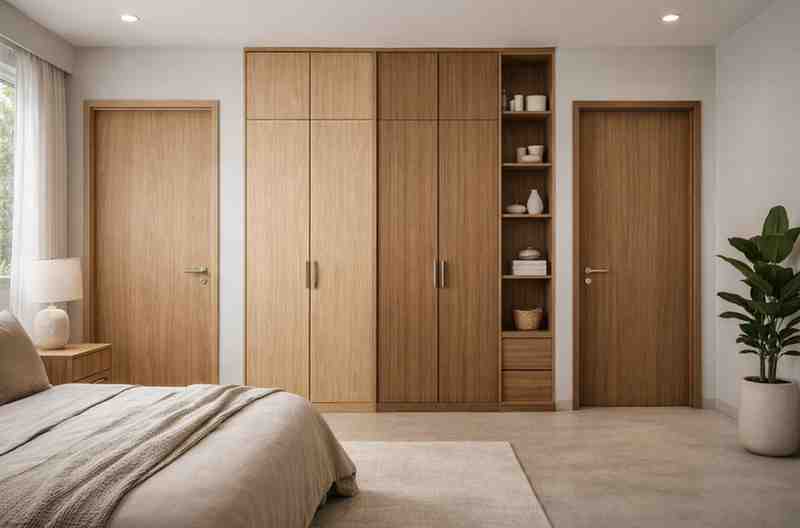

Introduction
Choosing the correct plywood is very important for how long the building will survive and how safe it will be when you are building or rebuilding. Fire-resistant plywood and marine plywood are two types of plywood that stand out because they protect so well. Both are made to do a better job than other things, but they have different aims. This blog post will talk about where to use fire-resistant plywood to make things safer and why marine plywood is the best choice for places that will get wet.
Table of Contents
ToggleWhere to Use Fire-Retardant Plywood at Home
- Kitchens and Utility Areas: Fires often start in kitchens. Putting up fire-resistant plywood cupboards, shelves, and fake ceilings is another technique to keep stoves, electrical tools, or poor wiring from starting fires. This crucial safety step can help keep a fire from spreading to other parts of the house.
- Near Electrical Panels and Wiring: A lot of house fires start with electrical fires that happen near wires and electrical panels. Putting down fire-resistant plywood around electrical panels, fuse boxes, and other places with a lot of wires makes it much less likely that a fire will spread.
- Attics and Storage Spaces: Attics are where people commonly store things, but they can be dangerous if there isn’t enough air flow or the wiring isn’t proper. The walls and floors of this room are composed of fire-resistant plywood, which makes it safer. This stops the fire from spreading to other parts of the house without being seen.
- Children’s Rooms and Public Spaces: Fire safety is very important in kids’ rooms; therefore, you can put a Fire-Retardant board on the walls and furniture to make them safer. This kind of plywood also helps meet safety criteria in public locations, homes with more than one family, and home enterprises, which is helpful for everyone.
Upgrade your home’s safety with certified Fire-Retardant plywood designed to slow down fire spread and reduce toxic smoke.
Why Marine Plywood Works Best in Wet Areas
- High-Quality Phenolic Resin: Marine plywood is particularly water-resistant since it is manufactured using a strong phenol-formaldehyde resin that hasn’t lost any of its strength. This powerful glue binds the veneers together for good and keeps water out. Even after being soaked in boiling water for a long period, it keeps the veneers from breaking apart and expanding. This is the greatest technique to link objects that won’t leak.
- Void-Free Core Construction: Marine plywood is produced with a sturdy core that doesn’t have any holes in it. There are very few or no gaps between the veneers since they are precisely fitted. This stops water from going into the heart and hurting it. This also makes the plywood stronger and more solid, which is why it’s great for producing furniture that lasts a long time.
- Resilience to Humidity and Steam: Regular plywood can soak up water, which can make it distort and decay in regions with a lot of humidity, such as coastal towns or during the monsoon season. Marine Plywood is engineered to resist these impacts; thus, it works well in kitchens, baths, and laundry rooms where there is a lot of steam and moisture.
- Durability for Outdoor Applications: Marine plywood is particularly weather-resistant; therefore, it can be used for objects that are only partly outside, such as fences, garden huts and balcony furniture. This stuff is sturdy and dependable since it can handle rain, sun, and temperature changes without losing its form or strength.
Protect your interiors from water damage with durable Marine Plywood that resists moisture, humidity, and decay.
Benefits of Choosing Fire-Retardant Plywood
- Enhanced Fire Safety: Fire-retardant plywood is fantastic because it makes it much difficult for fires to spread. The compounds in wood react to heat and produce a char layer. This layer keeps the fire from spreading and makes it burn more slowly. This gives individuals enough time to get out of the building safely and for help to get there.
- Reduced Smoke Emission: Breathing in smoke during a fire can be more dangerous than the fire itself. When it burns, high-quality fire-retardant plywood sends off a lot less smoke and harmful chemicals than conventional plywood. This makes it simpler to see when escaping and lowers the risk of suffocation, which is very important in an emergency.
- Compliance with Building Codes: Many construction codes and laws say that materials that don’t catch fire readily must be used, especially in places with a lot of people or businesses. This type of plywood can help builders and architects make sure their work is safe. This will help them avoid problems with the law and their insurance.
- Durability and Pest Resistance: The chemicals that make plywood fireproof also make it stronger and last longer. The treatment usually makes wood stronger against bugs like termites and borers, as well as heat and water. Because they are stronger, your furniture and fixtures will last longer, which is good for both safety and longevity.
Is Marine Plywood Worth the Price?
- Long-Term Durability and Lifespan: Marine plywood lasts a very long time since it is made so well. Wood that doesn’t rot when it gets wet, damp, or infested with vermin will usually endure longer than the house itself. Furniture and other things created from it will last for many years. You won’t have to fix or replace it as often because it lasts longer. This saves you money in the long run.
- Protection of High-Value Interiors: Setting up an entire kitchen or high-end bathroom, for example, takes a lot of money to protect high-value interiors. If the cheap board gets wet, it could break, and you’d have to start over. You can protect these pricey interiors and make sure they stay beautiful and useful for a long time by buying Marine Plywood. This keeps all of your money safe.
- Peace of Mind: Knowing that your furniture can endure water and moisture is a terrific way to feel safe. Marine Plywood comes with a robust warranty and an ISI certification (IS:710) that proves how well it works and how long it will last. This means you can use certain parts of your home without worrying about water damage.
- Eco-Friendly and Safe Choice: Many high-end forms of marine plywood, like Wigwam, are created with eco-friendly techniques and glues that don’t give off a lot of fumes. They are excellent for the earth as well as safe for your home. When you choose a high-quality product, you are getting a long-lasting solution that is worth the money.
Conclusion
Lastly, if you want to make informed choices about your home renovations, you should know the differences between Fire-Retardant and Marine Plywood. Fire-retardant plywood is particularly vital for safety since it stops fires from spreading. However, Marine Plywood is the best at keeping water and silt out of the way. Choosing the right material for the work will keep your family safe and help your investment last longer. These specific things cost a little more, but they last longer, provide you with peace of mind, and keep you safer from typical household threats.
Looking for Fire-Retardant or Marine Plywood that’s built to last? Choose WigwamPly for eco-conscious, ISI-certified, and engineered for modern Indian homes.
FAQ’s
- Is Fire-Retardant plywood fireproof?
No, it is not fireproof. It is designed to resist ignition and significantly slow down the spread of flames. - Can I use Marine Plywood for my kitchen cabinets?
Yes, Marine Plywood is the ideal choice for kitchen cabinets due to its exceptional resistance to moisture and steam. - What is the main difference between the two types of plywood?
Fire-Retardant plywood is treated to resist fire, while Marine Plywood is bonded with a special resin to resist water. - How do I know if the plywood is genuinely Marine Plywood?
Look for the ISI mark with IS:710 certification and a robust warranty from a reputable manufacturer. - Where should I use Fire-Retardant plywood in a home?
It’s best used in high-risk areas like kitchens, around electrical panels, and in public spaces.




